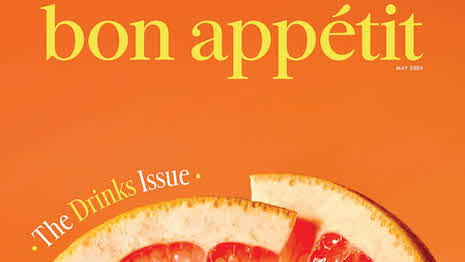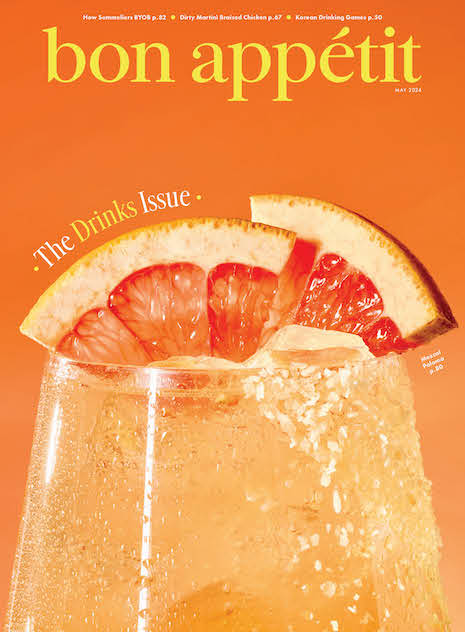 The special edition hits newsstands on April 23 — Luxury Daily presents the launch exclusively. Image courtesy of Condé Nast
The special edition hits newsstands on April 23 — Luxury Daily presents the launch exclusively. Image courtesy of Condé Nast
Condé Nast-owned Bon Appétit is offering a new wave of sober-curious readers diversified beverage coverage.
The monthly title’s first Drinks issue to reach newsstands since 1956 goes live today, as Luxury Daily presents the launch exclusively. Chronicling cuisine that embraces the zero-proof wave, Bon Appétit is using the opportunity to hone in on the “trend-turned-new normal” dominating food media.
“Drinks play an essential role in our foodways,” said Jamila Robinson, editor in chief of Bon Appétit, New York.
“We are hoping to reach everyone who is interested in how and what we drink, whether that is kombucha, or a cocktail, a spritzy cucumber drink for wellness and hydration, or oat milk in their matcha,” Ms. Robinson said. “We also want to introduce readers to brewers, mixologists and sommeliers who are influencing trends.
“They will experience the diversity and richness that add layers to cocktail recipes and wine pairings.”
Behind-the-scenes with Bon Appétit
A range of refreshments, from boba tea and kombucha to sports drinks and berry spritzes, make the cut, appearing across the pages of Bon Appétit's latest publication.
“I’m most excited about readers discovering how beverages help to shape food culture,” Ms. Robinson said.
“I’m excited about introducing the next wave of mezcal producers,” she said. “We play some Korean drinking games with soju, which adds a layer to such an important restaurant trend.
“We also take a deep dive on ways to BYOB from sommeliers like [Brooklyn-based sommelier] André Mack.”
Story topics run the gamut, with each contributor placing their spin on the theme with articles that signal the rise of nonalcoholic mixology.
Featured pieces include the Korean-style dinner party hosting guide “No Party Like an Anju Party” and “Catfish Out of Water,” where American writer and artist John Paul Brammer details how a childhood dish prompted a hometown return. Among the additional voices highlighted is entrepreneur and author Fawn Weaver, the first Black American woman to lead a major spirits company, interviewed by food and wellness writer Hali Bey Ramdene.
Spearheaded by a newly installed editorial lead, the team referenced more than 50 years of archival content for the project, pulling creative inspiration from Bon Appétit's past to help inform the present.
“The first question I had was when was the last time we devoted an issue solely to beverage, beyond wine,” Ms. Robinson said.
 The cover of The Drinks Issue. Image courtesy of Condé Nast
The cover of The Drinks Issue. Image courtesy of Condé Nast
“We looked at print and digital archives to understand the role beverages have played in the brand over the decades, from the photography to the recipes,” she said. “We found common threads in recipes and were able to get a snapshot of the products that were available to consumers and the ways we highlighted trends.
“Our editors then worked to develop stories and recipe content that would best express how drinks are shaping culture right now.”
Ms. Robinson was appointed editor in chief of Bon Appétit last fall, arriving with more than 20 years of media experience. Moving forward, expanding drinks coverage is central to the former food editor of the Philadelphia Inquirer’s strategy.
“We have access to so many more ingredients, and a wider distribution of spirits from around the world, which drives innovation and diversity,” Ms. Robinson said.
“In the 1970s, you would see mostly French and Italian wines, [and] liquors like Frangelico started making its way into recipes,” she said. “This year we’re showing off our favorite soju from Korea and giving useful ways to cook with vodka beyond the familiar pasta sauce.
“Audiences are well-traveled with interests in food and history from around the world, as techniques, such as fermentation or distilling, so we want to recognize that.”